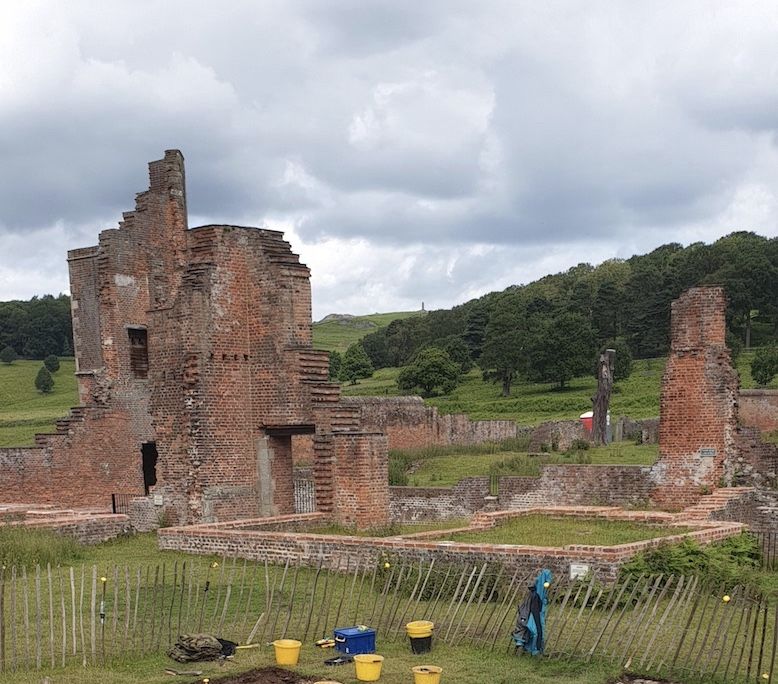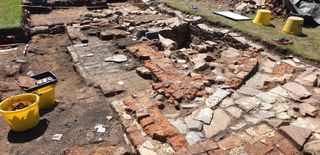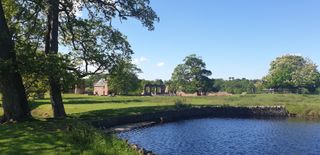Birthplace of England's '9-Day Queen,' Jane Grey, Discovered Under Park

Archaeologists have uncovered what may be the foundations of the childhood home of Lady Jane Grey — a relative of King Henry VIII and Queen of England for nine days in July 1553.
The newly discovered remains of the stone building are located at Bradgate Park in Leicestershire, England, an archaeological hotspot that researchers have been excavating since 2015. The park is home to Bradgate House, where different generations of the Grey family lived for more than 200 years.
"While Bradgate House is such an iconic site, very little is known about the standing structure and how it changed over time," project co-director Richard Thomas, a reader in archaeology at the University of Leicester, said in a statement. "Our evidence suggests that the home Lady Jane Grey would have recognized may have looked very different from what we see today." [Photos: Secret 'Hole' to Hide Priests Revealed in Tudor Mansion]
During this year's excavation, Thomas' team hopes to better understand how Bradgate House changed over time. "We are focusing attention on a series of stone structures that underlie the standing brick buildings," he said. "We will be trying to date their construction and when they were demolished to make way for the current structures."
The archaeologists also hope to learn about how the "most important families in Tudor times" lived during that era.

Lady Jane's great-grandfather was Henry VII; Henry VIII (known for starting the Protestant Reformation and marrying six wives) was her great uncle.
Before his death, Henry VIII named Jane as an heiress to the English throne, but said she could become queen only if his three children — Edward VI, Mary and Elizabeth — died first without issue. Edward ruled after his father's death, for just six years until he died at age 15. His advisor, John Dudley, recoiled at the thought of the Roman Catholic Mary taking the throne, and he persuaded Edward to instead leave the throne to Jane, a pious Protestant.
Sign up for the Live Science daily newsletter now
Get the world’s most fascinating discoveries delivered straight to your inbox.
Jane married Dudley's son and was crowned queen on July 10, 1553. But her reign was short; on July 19, it ended with her imprisonment in the Tower of London (essentially because Mary wanted the throne). Mary then held the throne until 1558. Queen Elizabeth followed, ruling until her death in 1603.
Grey died long before that, however. She was executed on Feb. 12, 1554, at the age of 16 or 17.

Her childhood home, Bradgate House, was built in 1520 by Thomas Grey. It's thought that Jane Grey was born there in 1537.
In addition to finding the foundations dating to Grey's childhood, archaeologists also found evidence of ice-age hunting, dating to 14,500 years ago, and Mesolithic hunting, dating to about 9,000 to 6,000 years ago. The team also found evidence of an Iron-Age settlement and a medieval hunting lodge.
- Family Ties: 8 Truly Dysfunctional Royal Families
- Photos: Hidden Text Discovered in England's Oldest Bible
- England's Atlantis: Images of a Lost Medieval Town | Dunwich
Originally published on Live Science.

Laura is the archaeology and Life's Little Mysteries editor at Live Science. She also reports on general science, including paleontology. Her work has appeared in The New York Times, Scholastic, Popular Science and Spectrum, a site on autism research. She has won multiple awards from the Society of Professional Journalists and the Washington Newspaper Publishers Association for her reporting at a weekly newspaper near Seattle. Laura holds a bachelor's degree in English literature and psychology from Washington University in St. Louis and a master's degree in science writing from NYU.










